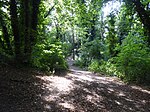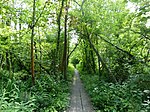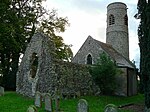Venta Icenorum
Archaeology of NorfolkFormer populated places in NorfolkIceniRoman sites in NorfolkRoman towns and cities in England ... and 1 more
South Norfolk

Venta Icenorum (Classical Latin: [ˈwɛnta ɪkeːˈnoːrũː], literally "marketplace of the Iceni") was the civitas or capital of the Iceni tribe, located at modern-day Caistor St Edmund in the English county of Norfolk. The Iceni inhabited the flatlands and marshes of that county and are famous for having revolted against Roman rule under their queen Boudica in the winter of AD 61.
Excerpt from the Wikipedia article Venta Icenorum (License: CC BY-SA 3.0, Authors, Images).Venta Icenorum
Stoke Road, South Norfolk Caistor St Edmund and Bixley
Geographical coordinates (GPS) Address Website External links Nearby Places Show on map
Geographical coordinates (GPS)
| Latitude | Longitude |
|---|---|
| N 52.5835 ° | E 1.2909 ° |
Address
Venta Icenorum Roman Town
Stoke Road
NR14 8QN South Norfolk, Caistor St Edmund and Bixley
England, United Kingdom
Open on Google Maps










